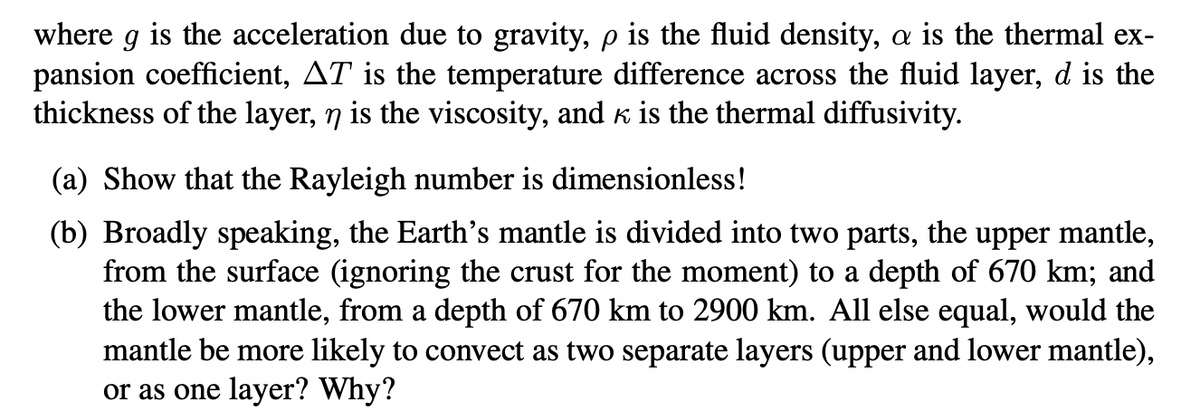where g is the acceleration due to gravity, p is the fluid density, a is the thermal ex- pansion coefficient, AT is the temperature difference across the fluid layer, d is the thickness of the layer, n is the viscosity, and k is the thermal diffusivity. (a) Show that the Rayleigh number is dimensionless! (b) Broadly speaking, the Earth's mantle is divided into two parts, the upper mantle, from the surface (ignoring the crust for the moment) to a depth of 670 km; and the lower mantle, from a depth of 670 km to 2900 km. All else equal, would the mantle be more likely to convect as two separate layers (upper and lower mantle), or as one layer? Why?
Energy transfer
The flow of energy from one region to another region is referred to as energy transfer. Since energy is quantitative; it must be transferred to a body or a material to work or to heat the system.
Molar Specific Heat
Heat capacity is the amount of heat energy absorbed or released by a chemical substance per the change in temperature of that substance. The change in heat is also called enthalpy. The SI unit of heat capacity is Joules per Kelvin, which is (J K-1)
Thermal Properties of Matter
Thermal energy is described as one of the form of heat energy which flows from one body of higher temperature to the other with the lower temperature when these two bodies are placed in contact to each other. Heat is described as the form of energy which is transferred between the two systems or in between the systems and their surrounding by the virtue of difference in temperature. Calorimetry is that branch of science which helps in measuring the changes which are taking place in the heat energy of a given body.


Trending now
This is a popular solution!
Step by step
Solved in 2 steps with 1 images







